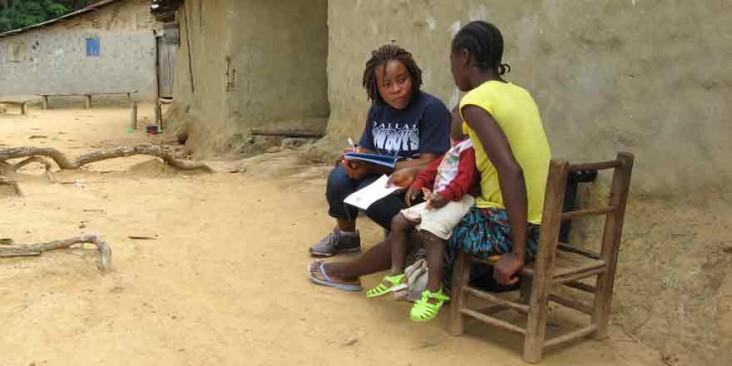Home » What We Do » Global Health » HIV and AIDS » Technical Areas » Surveillance and Surveys for HIV/AIDS
- What We Do
- Agriculture and Food Security
- Democracy, Human Rights and Governance
- Economic Growth and Trade
- Education
- Ending Extreme Poverty
- Environment and Global Climate Change
- Gender Equality and Women's Empowerment
- Global Health
- Water and Sanitation
- Working in Crises and Conflict
- U.S. Global Development Lab

DHS field practice in Liberia
Photo credit: Joanna Lowell, ICF International/The Demographic and Health Surveys (DHS) Program.
Surveillance and surveys (S&S) support systematic data collection, analysis and interpretation to provide information about the overall HIV epidemic and its changes over time. The U.S. President's Emergency Plan for AIDS Relief (PEPFAR) and U.S. Agency for International Development (USAID)-sponsored S&S activities collect data from populations and service delivery locations. Our partners for S&S also engage in important capacity-strengthening activities including training teams in-country to conduct large-scale surveys to provide critical information.
- The Demographic and Health Surveys Program(DHS Program) is USAID's flagship S&S project and the gold standard for global health surveys. The DHS Program provides high-quality data from household-based surveys on HIV-related areas, including HIV prevalence, testing behavior, stigma, condom use, higher-risk sexual behaviors and circumcision. Since 1984, DHS has conducted more than 300 surveys in 90 countries. All data sets are made publicly available and accessible for analysis.
The DHS Program also conducts facility surveys to provide an overview of a country's health service delivery programs. These surveys are used to monitor health systems strengthening.
- The S&S team also works with the Joint United Nations Programme on HIV/AIDS (UNAIDS) and international partners to assist countries with their annual HIV estimates and projections.
- USAID has partnered with the U.S. Census Bureau to develop and maintain the HIV/AIDS Surveillance Data Base, an international compilation of HIV prevalence and incidence data. This resource provides access to global seroprevalence survey data from a wide variety of sources, including small-scale key population surveys, sub-national HIV prevalence studies, and nationally-representative household-based surveys.
- Through the Interagency Collaborative for Program Improvement (ICPI), the S&S team works with PEPFAR interagency partners to provide the data sets used for setting targets and monitoring programs, including the number of people living with HIV, children living with HIV, the number of pregnant women and the number of uncircumcised men.
Additional Resources
- Learn more about Demographic and Health Surveys Program
- Learn more about the U.S. Census Bureau's HIV Surveillance Data Base







Comment
Make a general inquiry or suggest an improvement.